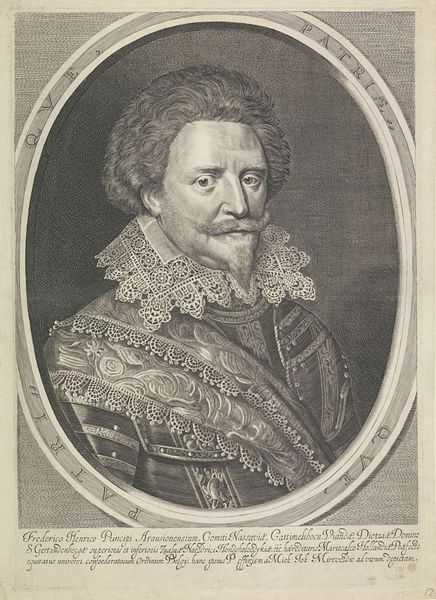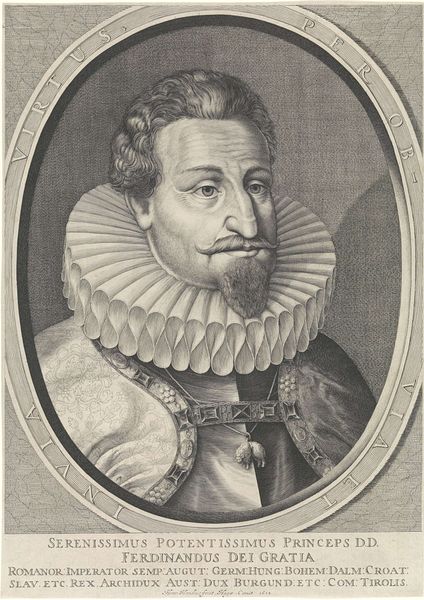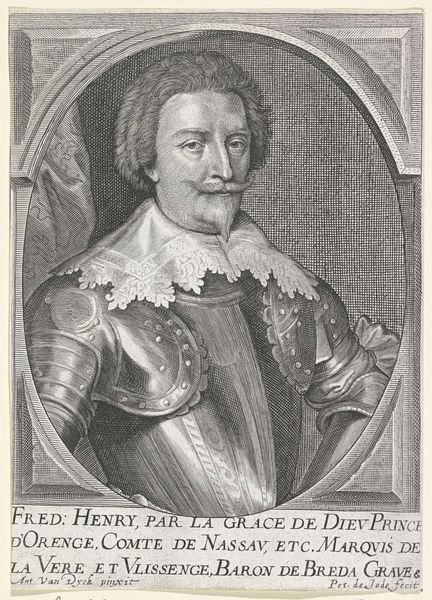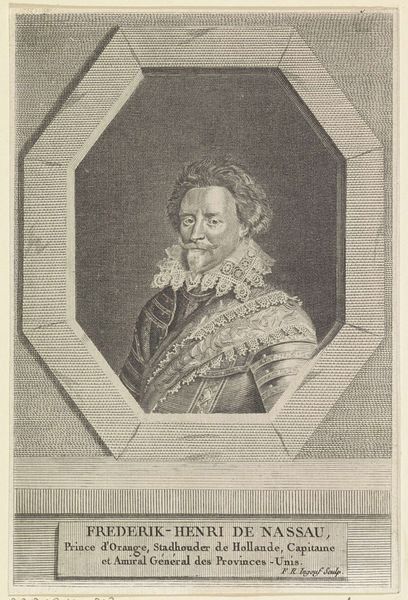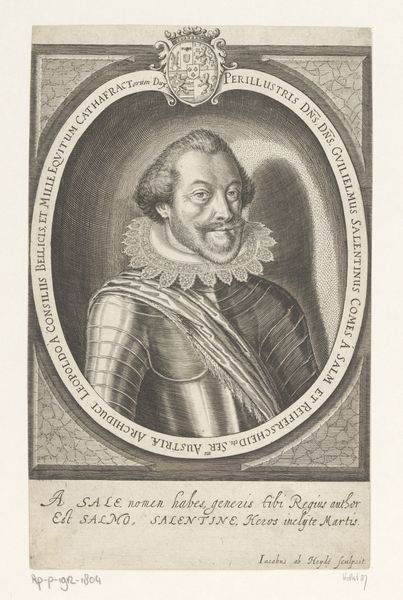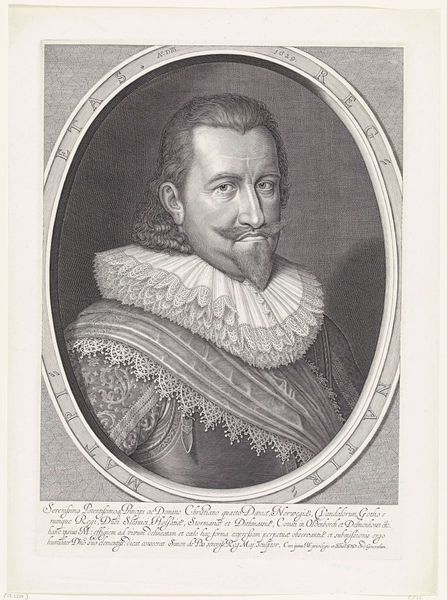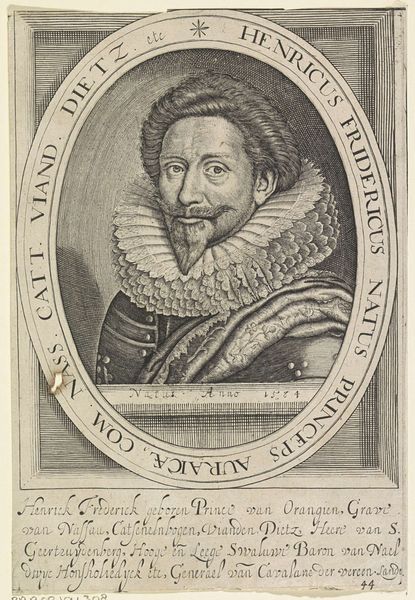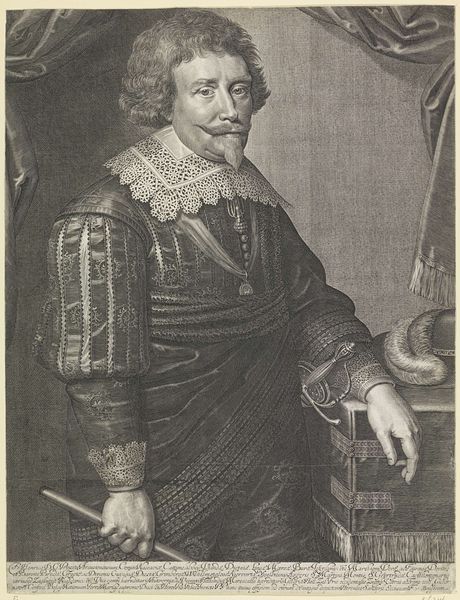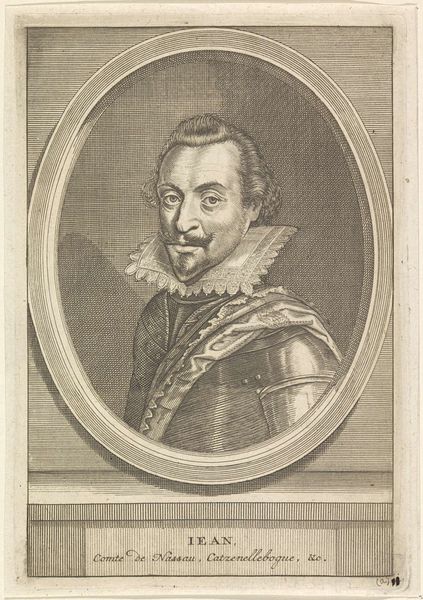
Portret van Frederik Hendrik, prins van Oranje, op 44-jarige leeftijd 1628
0:00
0:00
engraving
#
portrait
#
baroque
#
old engraving style
#
figuration
#
portrait reference
#
line
#
history-painting
#
northern-renaissance
#
engraving
Dimensions: height 415 mm, width 300 mm
Copyright: Rijks Museum: Open Domain
Hendrick Hondius the first made this print of Frederik Hendrik, Prince of Orange when the subject was 44 years old. This image offers insight into the public role of art in the Dutch Golden Age. Prints like this served as propaganda, shaping public perception of leaders. Hondius, as the artist, played a key role in constructing and disseminating this image. Frederik Hendrik's armor and lace collar signify his military and aristocratic status. The Latin text surrounding the portrait emphasizes his titles and territories, reinforcing his authority. The Netherlands at this time was undergoing significant political and economic changes, and Frederik Hendrik was a central figure in the Dutch Republic. He inherited the position of Stadtholder, a role that combined military leadership with political power. The print suggests the importance of portraiture in legitimizing and celebrating power. The image doesn't overtly critique the institutions of art; rather, it seems to serve the interests of the ruling elite. To fully understand this image, historians might consult archival documents, political pamphlets, and other visual representations of Frederik Hendrik. This research illuminates the print's role in shaping public opinion and solidifying power during a pivotal era in Dutch history.
Comments
No comments
Be the first to comment and join the conversation on the ultimate creative platform.
